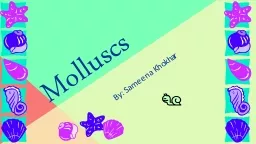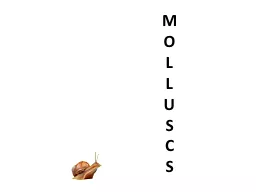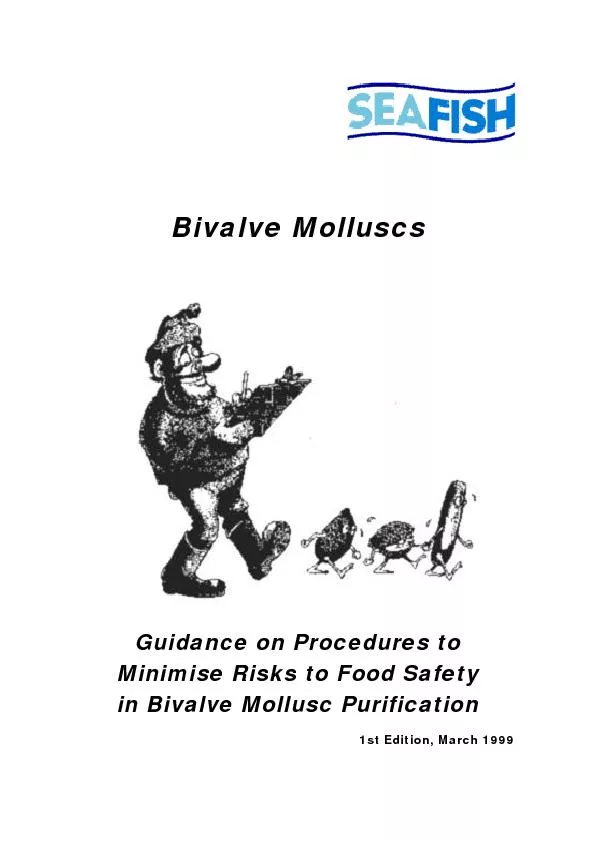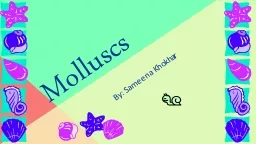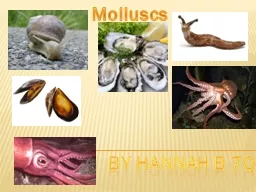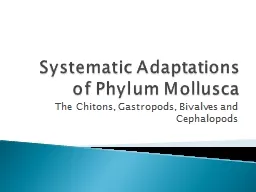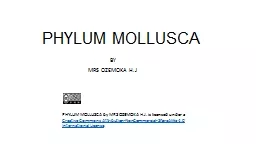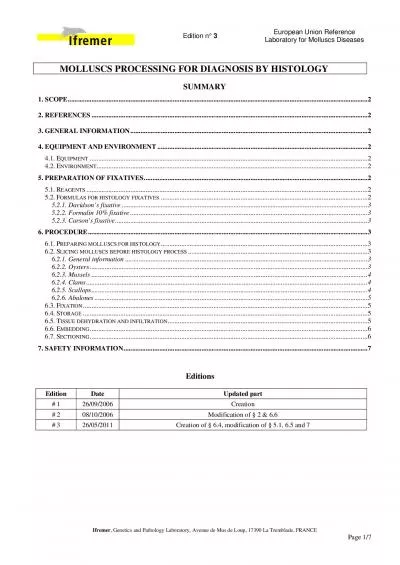PPT-Molluscs By: Sameena Khokhar
Author : myesha-ticknor | Published Date : 2018-12-17
The term m ollusc means soft A mollusc is a diverse animal and is a member of the phylum Mollusca group Around eighty five thousand species of molluscs have
Presentation Embed Code
Download Presentation
Download Presentation The PPT/PDF document "Molluscs By: Sameena Khokhar" is the property of its rightful owner. Permission is granted to download and print the materials on this website for personal, non-commercial use only, and to display it on your personal computer provided you do not modify the materials and that you retain all copyright notices contained in the materials. By downloading content from our website, you accept the terms of this agreement.
Molluscs By: Sameena Khokhar: Transcript
Download Rules Of Document
"Molluscs By: Sameena Khokhar"The content belongs to its owner. You may download and print it for personal use, without modification, and keep all copyright notices. By downloading, you agree to these terms.
Related Documents

